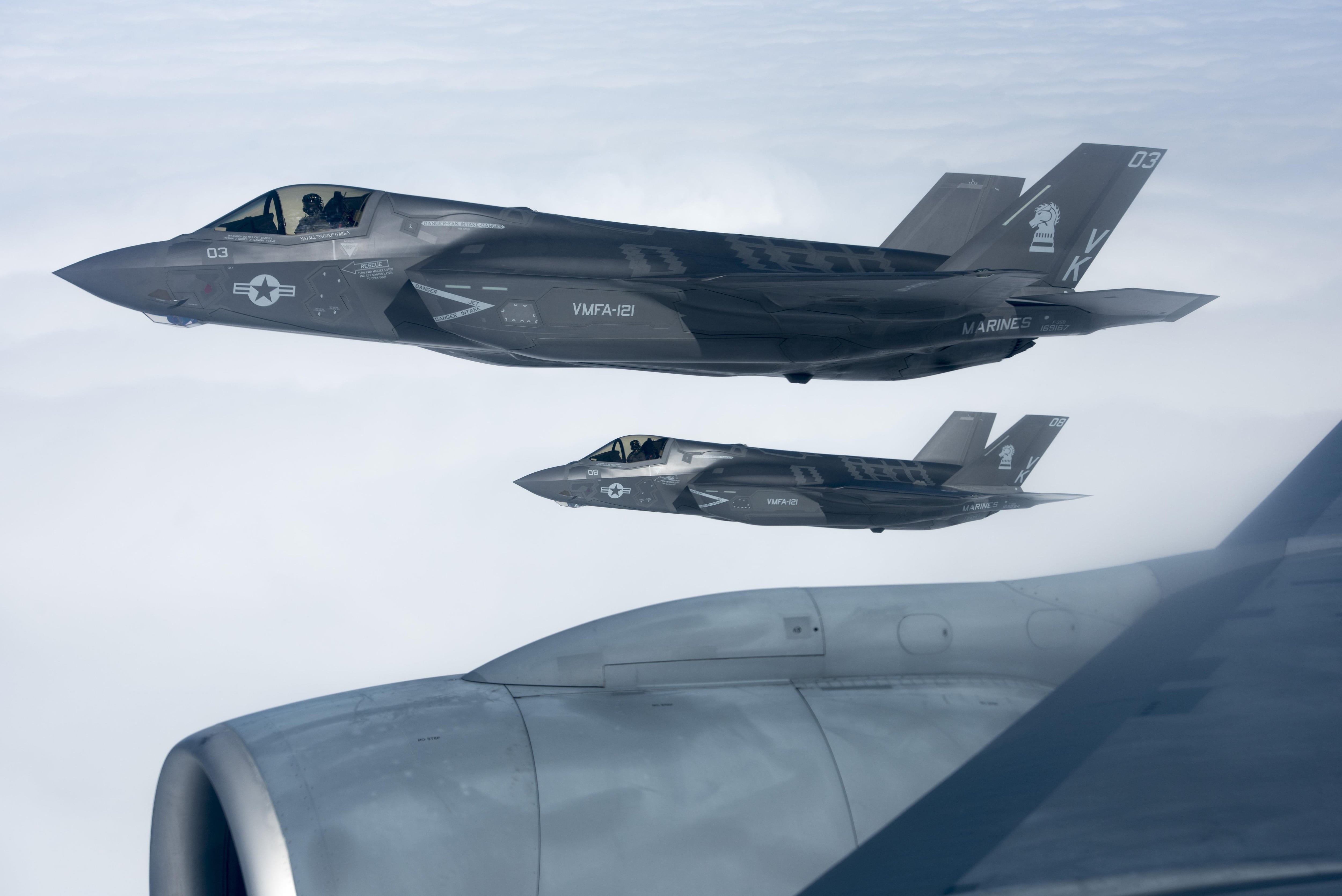While most aircraft bird strikes result in minimal damage, birds can present a serious safety dilemma for U.S. military pilots.
Since fiscal year 2004, the Marine Corps has recorded roughly 1,540 bird or animal strike incidents.
Less than 30 of those incidents resulted in serious damage or a mishap classification between A to C, according to Marine spokesman Capt. Christopher Harrison.
The Navy’s definition of mishap classifications from A to C involve damages ranging from as low as $50,000 for a Class C to $2 million for a Class A. Or, a fatality or permanent disability for Class A to more than a missed day of work from an injury for a Class C.
Harrison said that a May 7 F-35 bird strike out of Iwakuni, Japan, which caused an estimated more than $2 million in damages, was the second Class A mishap resulting from a bird strike for the Corps in the past 15 years.
RELATED

The previous incident occurred in 2011, when a AH-1W Cobra, with Marine Light Attack Helicopter Training Squadron 303 out of Camp Pendleton, California, hit a hawk, “causing in-flight breakup” of the Cobra.
Marine Cobra pilots Capt. Jeffrey Bland and 1st Lt. Thomas Heitmann collided with a red-tailed hawk on Sept. 19, 2011, which damaged the pitch change link, according to the San Diego Union-Tribune.
Both of the pilots were killed in the accident.
According to the San Diego Union-Tribune, investigators recommended that Naval Air Systems Command consider redesigning the AH-1W Cobra transmission to better withstand bird strikes. The Corps is currently phasing out its older legacy Cobras for the AH-1Z Viper.
Bird strike reporting is mandatory for Marine and Naval aviators, even if an aircraft sustains no damage from the incident.
Much of the procedures implemented by Marine pilots to mitigate bird strikes are done at the group or squadron level and are based on each unit’s standard operating procedure, Harrison explained.
“Aircrew action in the event of a bird strike is also a mandatory briefing item for certain mission sets across several aviation platforms," Harrison said.
A common tool used by Marine pilots during flight planning to avoid striking birds is called the avian hazard advisory system, or AHAS.
The AHAS system is a website tool designed and operated by the Air Force that uses geographic information system technology to help predict bird migrations, habitat and breeding.
Pilots can go to the website and input flying area and time, and AHAS can provide a visual display on Google Earth or Google Maps potential bird hazard paths or a 12 hour risk assessment of the area.
Since 1995, the Air Force recorded more than 69,000 wildlife-aircraft strikes, according to the AHAS site. Those strikes resulted in the deaths of 23 aviators and destroyed 12 aircraft, causing millions in damages.
Marine Corps Times reached out to the Air Force to see if the number of bird strikes and fatalities were current on the AHAS website.
On April 17, an Air Force F-16 struck a hawk during a routine landing. The aircraft was assigned to the 49th Wing out of Holloman Air Force Base, New Mexico.
"We make every effort to address factors that are reasonably within our control in order to ensure the safe conduct of flight operations,” Harrison said.
Shawn Snow is the senior reporter for Marine Corps Times and a Marine Corps veteran.




